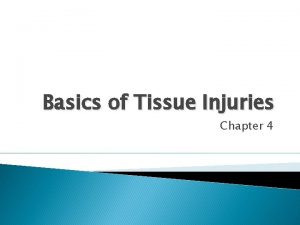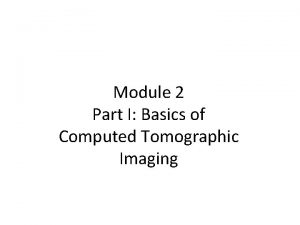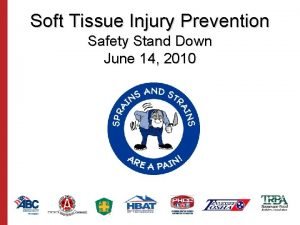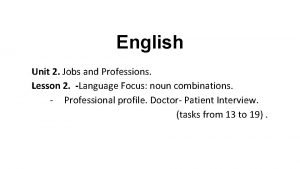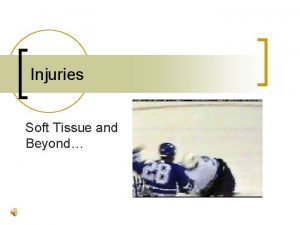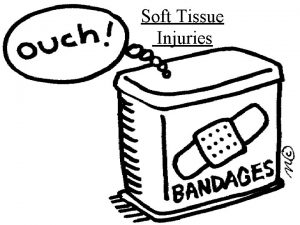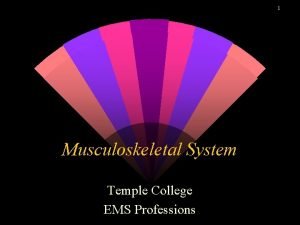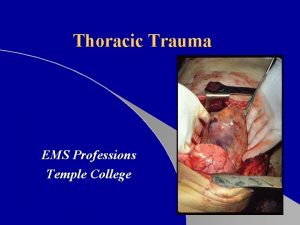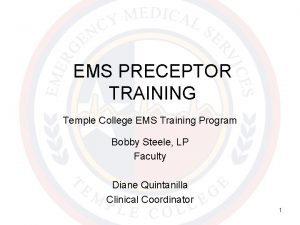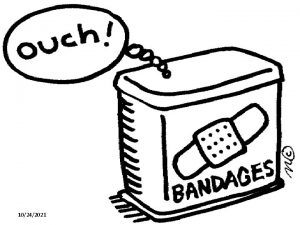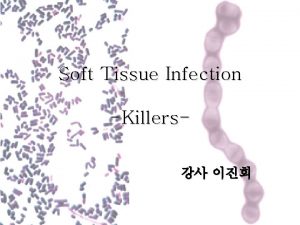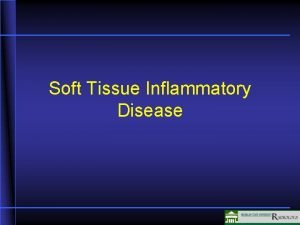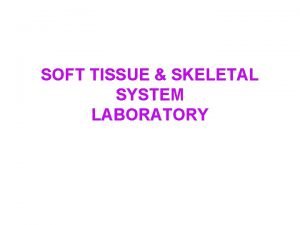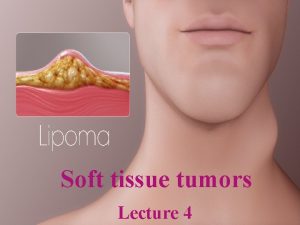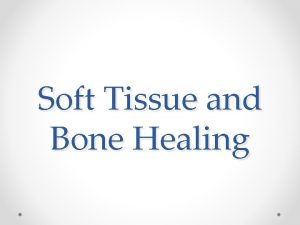Soft Tissue Injuries Temple College EMS Professions 1
























- Slides: 24

Soft Tissue Injuries Temple College EMS Professions 1

Skin Anatomy and Physiology • Body’s largest organ • Three layers – Epidermis – Dermis – Subcutaneous tissue 2

Skin Anatomy and Physiology • Complex system, variety of functions – Sensation – Control of water loss – Protection against microbes – Temperature control 3

Soft Tissue Injuries • Closed • Open 4

Closed Injury • • Associated with blunt trauma Skin remains intact Damage occurs below surface Types – Contusions – Hematomas 5

Contusion • Produced when blunt force damages dermal structures • Blood, fluid leak into damage area causing swelling, pain • Presence of blood causes skin discoloration called ecchymosis (bruise) 6

Hematoma • “Blood lump” • Larger blood vessel damaged • Causes mass of blood to collect in the injured area • Fist-sized hematoma = 10% volume loss 7

With Closed Soft Tissue Injury • How much blood is tied up in that injury rather than circulating in the vessels? • What could the force the caused the soft tissue trauma have done to underlying organs? 8

Closed Injury Management • • • Rest Ice Compression Elevate Splint When in doubt assume underlying fractures are present 9

Open Injury • Skin broken • Protective function lost • External bleeding, infection become problems 10

Open Injury Types • • • Abrasions Lacerations Punctures Avulsions Amputations 11

Abrasion • Loss of portions of epidermis, upper dermis by rubbing or scraping force. • Usually associated with capillary oozing, leaking of fluid • “Road rash” 12

Laceration • Cut by sharp object • Typically longer than it is deep • May be associated with severe blood loss, damage to underlying tissues • Types – Linear – Stellate 13

Punctures • • Result from stabbing force Wound is deeper than it is long Difficult to assess injury extent Object producing puncture may remain impaled in wound 14

Avulsions • Piece of skin torn loose as a flap or completely torn from body • Result from accidents with machinery and motor vehicles • Replace flap into normal position before bandaging • Treat completely avulsed tissue like amputated part 15

Amputations • Disruption of continuity of extremity or other body part • Part should be wrapped in sterile gauze, placed in plastic bag, transported on top of cold pack • Do NOT pack part directly in ice • Do NOT let part freeze 16

Open Wound Management • Manage ABCs first • Control bleeding • Prevent further contamination, but do not worry about trying to clean wound • Immobilize injured part • Mange hypoperfusion if present 17

Special Considerations • • • Impaled objects Eviscerations Open chest wounds Neck wounds Gunshot wounds 18

Impaled Objects • Do NOT remove • Stabilize in place • Exception – Object in cheek – Remove, dress inside and outside mouth 19

Eviscerations • Internal organs exposed through wound • Cover organs with large moistened dressing, then with aluminum foil or dry multi-trauma dressing • Do NOT use individual 4 x 4’s • Do NOT attempt to replace organs 20

Open Chest Wound • May prevent adequate ventilation • Cover with occlusive dressing • Monitor patient for signs of air becoming trapped under pressure in chest (tension pneumothorax) • If tension pneumo develops lift dressing corner to relieve pressure 21

Neck Wounds • Risk of severe bleeding from large vessels • Risk of air entering vein and moving through heart to lungs • Cover with occlusive dressing • Do NOT occlude airway or blood flow to brain • Suspect presence of spinal injury 22

Gunshot Wound • Special type of puncture wound • Transmitted energy can cause injury remote from bullet track • Bullets change direction, tumble • Impossible to assess severity in field or ER • Patient must go to OR 23

Power. Point Source • Slides for this presentation from Temple College EMS: http: //www. templejc. edu/dept/ems/p ages/powerpoint. html 24
 Chapter 14 bleeding shock and soft tissue injuries
Chapter 14 bleeding shock and soft tissue injuries Chapter 4 basics of tissue injuries
Chapter 4 basics of tissue injuries Gustilo anderson
Gustilo anderson Hémorragie en flammèche
Hémorragie en flammèche Soft tissue hounsfield units
Soft tissue hounsfield units Soft tissue rheumatoid arthritis
Soft tissue rheumatoid arthritis Soft tissue examples
Soft tissue examples Soft tissue rheumatism
Soft tissue rheumatism Reading comprehension about jobs and occupations
Reading comprehension about jobs and occupations Most dangerous professions
Most dangerous professions Visual sketchpad memory
Visual sketchpad memory Allied medical professions list
Allied medical professions list Between 1950 and 2000 physical activity professions
Between 1950 and 2000 physical activity professions Memory devices meaning
Memory devices meaning Wickens et al fruit meat and professions
Wickens et al fruit meat and professions New global professions
New global professions Listening professions
Listening professions Professions english lesson
Professions english lesson Fitness professions
Fitness professions Issues and ethics in the helping professions 9th edition
Issues and ethics in the helping professions 9th edition Classification internationale type des professions
Classification internationale type des professions William shakespeare professions
William shakespeare professions In your notebook write the question
In your notebook write the question South african council for natural scientific professions
South african council for natural scientific professions Engineering and geoscience professions act
Engineering and geoscience professions act

